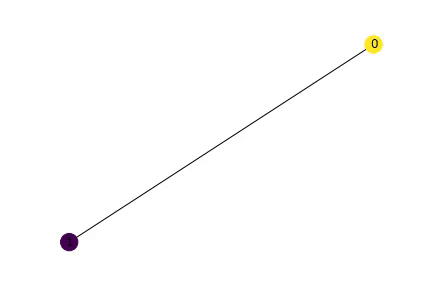The Birthday Problem
- What is the Birthday Problem aka Birthday Paradox?
- The math (stuff that goes over my head on the first read):
- It still isn't believable, simulate it:
- Why is (most of the time) our guess is too high?
#collapse-hide
x = int(input("Put your guess in here:"))
if x < 23:
print("Too low..wow your intution is wrong on the opposite way than most people XD")
elif x > 23:
print("That's too high,read on to find out why")
else:
print("Perfect,You have seen this problem before haven't you?")
The math (stuff that goes over my head on the first read):
Let 'n' be the number of people at party.
Let's assume that everyone in the party has a different birthday.
What is the probablity 'q' of that happening?
if n = 2:
number of choices for first birthday,b1 = 365
number of choices for second birthday,b2 = (365 - 1) = 364 (Anything other than first birthday)
probablity of choosing the particular day as first birthday = 1/365
probablity of choosing the particular day as second birthday = 1/365
reason: probablity of choosing any number from 365 choices = 1/365
q(n = 2) = (365 x (1/365)) x ((364) x (1/365)) = 364/365
if n = 3:
similarly,
b1 = 365
b2 = 365 - 1 = 364
b3 = 365 - 2 = 363 (anything other than 2 already choosen)
q(n = 3) = (365 x (1/365)) x ((364) x (1/365)) x (363 x (1/365)) = (364 x 363)/(365 x 365)
hence:
q(n) = (364 x 363 x 362 x .... (365 - (n - 1))) / (365)^(n - 1)
= (365!)/ ((365^n) x ((n - 1)!))
The above calculates the formula for party of 'n' people all with unique birthday.
Now the only two scenarios possible are :
either there is some birthday match or there is none
By law of total probablity: p(n) + q(n) = 1 where, p(n) is the probablity there is a birthday match therefore: p(n) = 1 - q(n)
Using the above formulas,the
#collapse-hide
def q(n, choices = 365):
q = 1
for i in range(1, n):
x = (choices - i)/choices
q *= x
return (q) #at max it is 1
#collapse-hide
def p(n, choices = 365):
return(1 - q(n,choices))
#collapse-hide
print("p(x):",100 * p(x))
print("q(x):",100 *q(x)) #for higher guesses comes to 100 because 99.99999
#collapse-hide
print("p(23):",100 * p(23))
print("q(23):",100 *q(23))
As, the number of people grow linearly : n (i.e 1,2,3,4,5,6,..) the number of pairs grow quadratically : (n x (n - 1)/2) (i.e 0,1,3,6,10..) The animation below shows how the "pairs" (representated by edges increase) as number of people (representated by nodes) increase
#collapse-hide
#imports
import random
import networkx as nx
import matplotlib.pyplot as plt
import matplotlib.animation
from moviepy.editor import *
#collapse-hide
#intializations
birthdays_possible = 365
X = nx.Graph()
X.add_node(0)
birthdays = [random.choice(range(birthdays_possible))]
match = list()
fig, ax = plt.subplots(figsize=(6,4))
plt.close()
#collapse-hide
def update(num):
ax.clear()
if num > 0:
birthdays.append(random.choice(range(birthdays_possible)))
print(birthdays)
for i in range(num):
X.add_edge(i,num)
if birthdays[i] == birthdays[num]:
match.append('r')
else:
match.append('k')
nx.draw_circular(X, ax = ax, with_labels = True, node_color = birthdays,edged_color = match)
#collapse-hide
ani = matplotlib.animation.FuncAnimation(fig, update, frames= 25, interval= 2000, repeat=True)
#collapse-hide
print("birthdays selected in the animation:")
ani.save('birthday.mp4')
#collapse-hide
def is_there_a_match(birthdays):
return (len(birthdays) != len(set(birthdays)))
#collapse-hide
is_there_a_match(birthdays)
#collapse-hide
clip = (VideoFileClip("birthday.mp4"))
clip.write_gif("birthday.gif")
